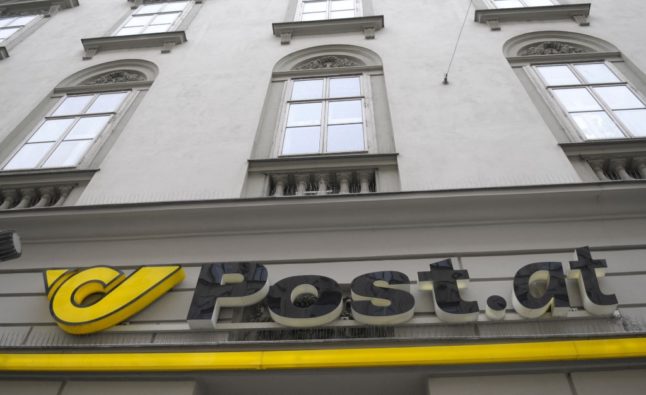Whether you’re looking to send presents to family living abroad or keep up fast correspondence within Austria, your price and expected delivery time will depend on whether you avail yourself of standard or priority options.
What are my domestic options?
You can send small letters of up to 20 grams within Austria for €0.81 at a standard rate and €1.00 for a priority rate. If your letter is over 100 grams, you’ll pay either €1.30 or €1.50. You can also send small packets of up to two kilograms for €3.00 and medium ones for €4.50 – with economic options being only slightly cheaper than this priority rate.
If you pick the priority option, your letter will arrive anywhere else in Austria the next business day. Given the small difference in cost, it’s typically better to choose it unless you’re really not concerned about when your post ends up being delivered.
READ ALSO: Cost of living: Austrian Post announces price increases
What about sending letters abroad?
This depends on where you’re sending them.
Small letters of less than 20 grams can be sent within Europe – including both the EU and neighbouring European countries – for €1.20 and outside Europe for €1.90.
You can send priority letters that are between 20 and 75 grams for €2.30 to the rest of Europe and €2.90 outside Europe, with non-priority being only slightly less money.
If you start getting into large letters, the price goes up quite a bit.

A large letter packet, which can be up to 35 cm long and 25 cm wide, will cost you at least €6.50 to send within Europe and €8.20 by priority. If it’s leaving Europe, that’ll set you back at least €11.00 and €15.00 if you send it priority.
If you send an extra-large packet – so up to 90 cm long and 50 cm wide – you’ll pay at least €9.90 to send it on within Europe and €12.90 to send it priority. If you send it outside Europe, you’ll be on the hook for €21.80 or €24.20 if you send it priority.
What other services can I get?
You can opt for several extras. These include item tracking for €0.25 or €2.50 to send you post by registered mail. For €2.20, you can specify that the post be delivered only to the named addressee, or you can also opt to receive a notification when the post has been received at its destination.
Sending registered mail internationally will cost more, coming out to a charge of €3.65.
What about parcels?
The cost of sending a parcel within Austria is determined mostly by weight, with the price sliding up from €5.49 for parcels less than a kilogram, to about €11.22 for up to 10 kg. You can still send parcels between 10 kg and 31.5 kg for €15.03.
Internationally, this goes up in cost the further away you send it. Austrian Post divides parcel destinations up into five “zones” – one of which has several sub-zones.
Postal zone 1 includes all EU countries and splits them up into zones 1a, 1b, and 1c. Zone 1a involves EU countries that directly border Austria – such as Germany, Croatia, and Hungary.
Zone 1b includes France and Belgium, which are just a little further away.
Zone 1c has the furthest away countries in the EU, such as Cyprus and Ireland. What’s important to remember here though, is that the price differential is negligible. You’ll pay between €9.79 and €10.18 to send a boxable light package to another EU country. Between €21.04 and €22.13 will get a four kilogram package from Austria to anywhere else in the EU.
The difference comes in larger packages. A 30 kg package can get sent to Germany for €53.95, but it will set you back €93.60 to send it to Cyprus.
Zone 2 covers European and Mediterranean countries that aren’t in the EU, including the UK, Israel, Egypt, and Syria. You can send packages there on a sliding scale from €17.87 for a single kilo all the way to €46.50 for 10 kg and €126.00 for up to 31.5 kg.
READ ALSO: How to post packages between Austria and the UK post-Brexit
Zone 3 covers Canada and many Central Asian countries, with package posting rates of between €20.64 for a kilo and €175.00 for large packages of over 10 kg.
The United States falls into zone 4, as does east Asia and southern Africa, charging prices of €24.02 for a single kilo, €46.20 for 10 kg, and €220.00 for large packages of up to 31.5 kg.
Finally, the most expensive places to send packages from Austria are also – predictably – the furthest flung countries in zone 5. These countries include Australia, New Zealand, and most of the rest of Oceania. Sending a one kilo package there will cost you €28.49, while you’re shell out €62.50 for 4 kg and €365.00 for a large package of up to 31.5 kg.



 Please whitelist us to continue reading.
Please whitelist us to continue reading.
Member comments